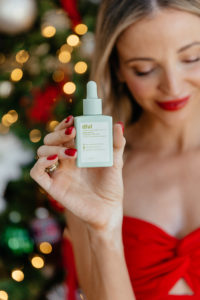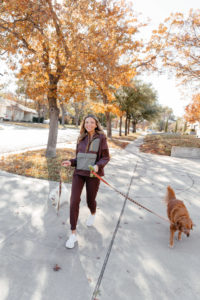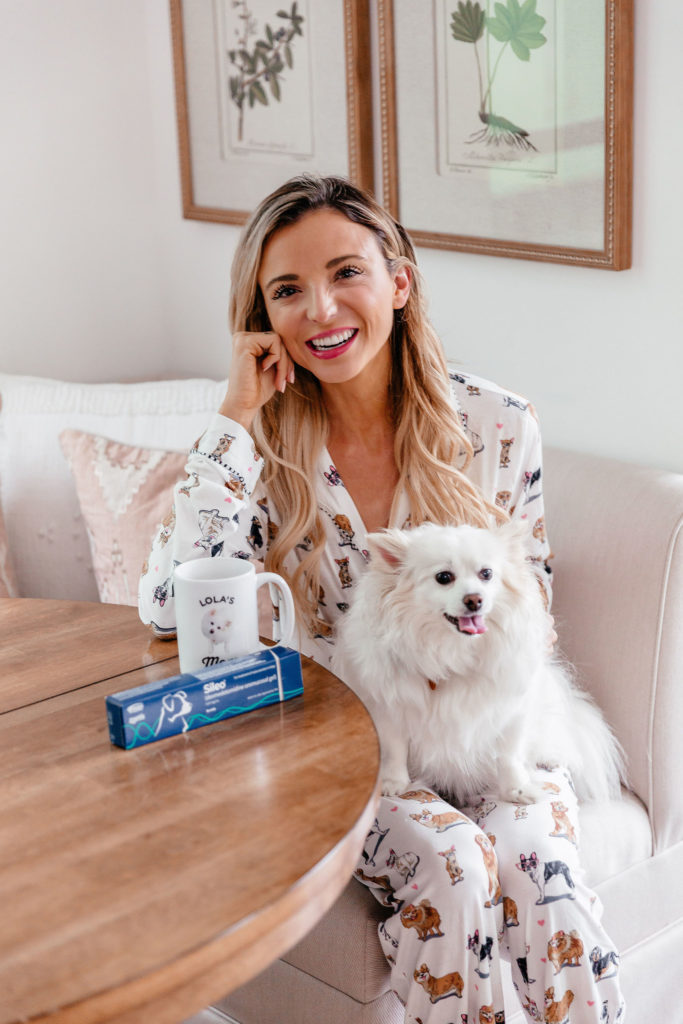
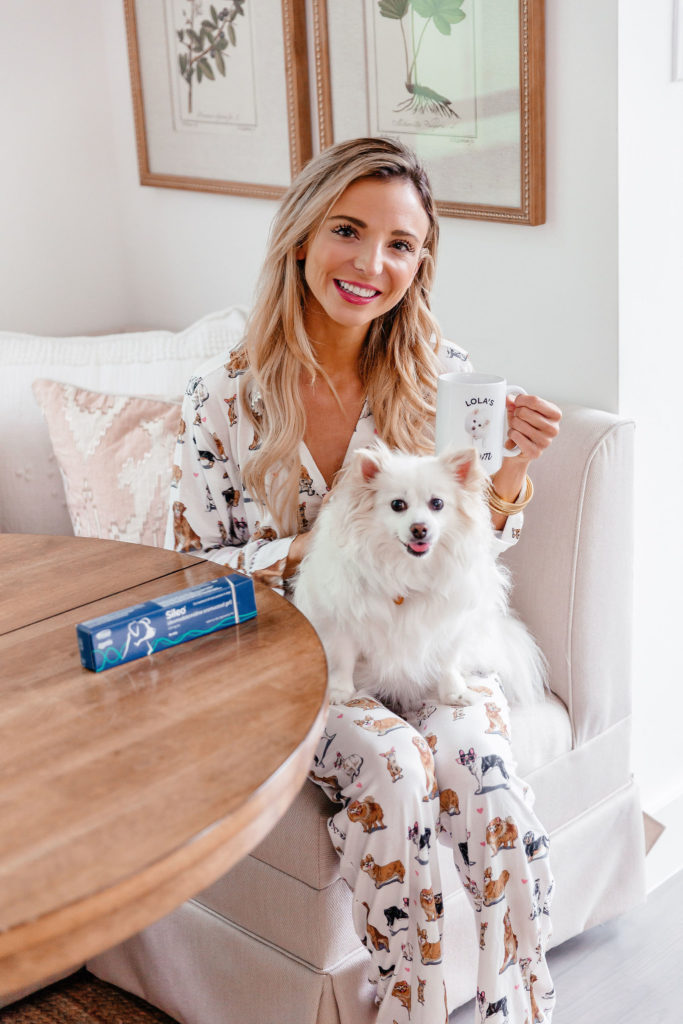

How We Helped Lola with Noise Aversion
This post is written in collaboration with Zoetis Petcare.
Can y’all believe it’s been over 14 months since @thatdoglola came into our lives? If you remember, I found Lola in the middle of the street with serious injuries after being hit by a car. After numerous vet appointments, and lots of TLC, she made an amazing recovery and has been a beloved fixture in Jordan’s and my family. Seriously, I wouldn’t know what to do without that sweet little ball of white fur!
After all she went through, it’s no surprise that she is anxious and afraid of many things. Noises are a big trigger for her, which means that she had noise aversion. I’ve been surprised to learn that noise aversion is actually super common in many animals especially dogs.
Recently, the lot next to our home has gone under construction. The noise from the construction has been pretty traumatizing for Lola. She gets super nervous, trembles, and hides under the couch. Even things like thunder are enough to put her in a frenzy. Watching her go through this is heartbreaking for me, especially after everything else she’s been through. So, I decided to dig a little deeper and talk to the veterinarian about what possibilities there are to help her.
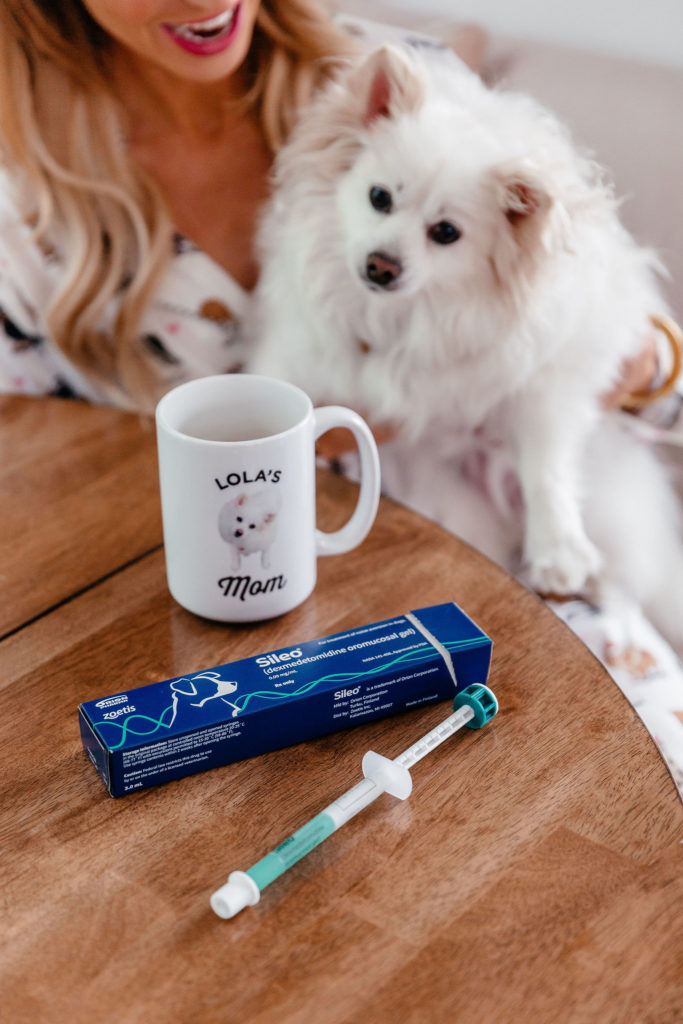
Lola’s Noise Aversion Remedy
We’ve been using a prescription doggy medication called Sileo® (dexmedetomidine oromucosal gel) for a few weeks now and have seen amazing results. Lola has responded wonderfully to the meds and they’ve made a huge difference in treating her noise aversion. She’s much calmer in the face of unexpected noises, and it’s so nice to see my happy puppy back.
Talking with my vet really opened my eyes to just how common this condition is for our furry friends. According to a Harris poll up to 67% of dog owners say their dog experiences noise aversion behaviors, including panting, trembling, cowering, hiding, escape behavior, restlessness, refusing to eat, clinginess, or even immobility.
Sileo is the first FDA-approved prescription medication for the treatment of canine noise aversion. It works by calming the dog, without sedating. One of the things I liked most about it is that it has rapid speed of onset, meaning that I could give Lola the meds when I knew a noise would be occurring. It was super easy too—just apply Sileo gel with the syringe between the cheek and gums. See how to administer Sileo correctly here. It absorbs quickly and is so convenient. If your dog suffers severe cardiovascular disease, respiratory, liver or kidney diseases, you should not use Sileo.
I’m so relieved that we’ve found this medication to help treat Lola’s noise aversion. It was awful watching my little pup have such terrible panic attacks over noises, and it also became somewhat burdensome to deal with from constantly trying to calm her down. Sileo has really eliminated that strain and allowed us to rebuild our human- animal bond.
For those of you who have dogs who react to noise, take this quiz to see if your dog shows signs of noise aversion and talk to your vet. Thankfully, this condition is treatable. Then dogs don’t have to reach a severe state that impacts their quality of life. Noise is part of life, and now there’s a way to deal with it.
Only happy pups around my house now! Does your dog freak out over noises, too??
xo,
Dani
IMPORTANT SAFETY INFORMATION: Do not use SILEO in dogs with severe cardiovascular disease, respiratory, liver or kidney diseases, or in conditions of shock, severe debilitation, or stress due to extreme heat, cold or fatigue or in dogs hypersensitive to dexmedetomidine or to any of the excipients. SILEO should not be administered in the presence of preexisting hypotension, hypoxia, or bradycardia. Do not use in dogs sedated from previous dosing. SILEO has not been evaluated in dogs younger than 16 weeks of age or in dogs with dental or gingival disease that could have an effect on the absorption of SILEO. SILEO has not been evaluated for use in breeding, pregnant, or lactating dogs or for aversion behaviors to thunderstorms. Transient pale mucous membranes at the site of application may occur with SILEO use. Other uncommon adverse reactions included emesis, drowsiness or sedation. Handlers should avoid direct exposure of SILEO to their skin, eyes or mouth. Failure to lock the ring-stop on the syringe before dosing SILEO could potentially lead to an accidental overdose. Always review INSTRUCTIONS FOR USE before dispensing and dosing. See full Prescribing Information: https://bit.ly/2FCeyP8






